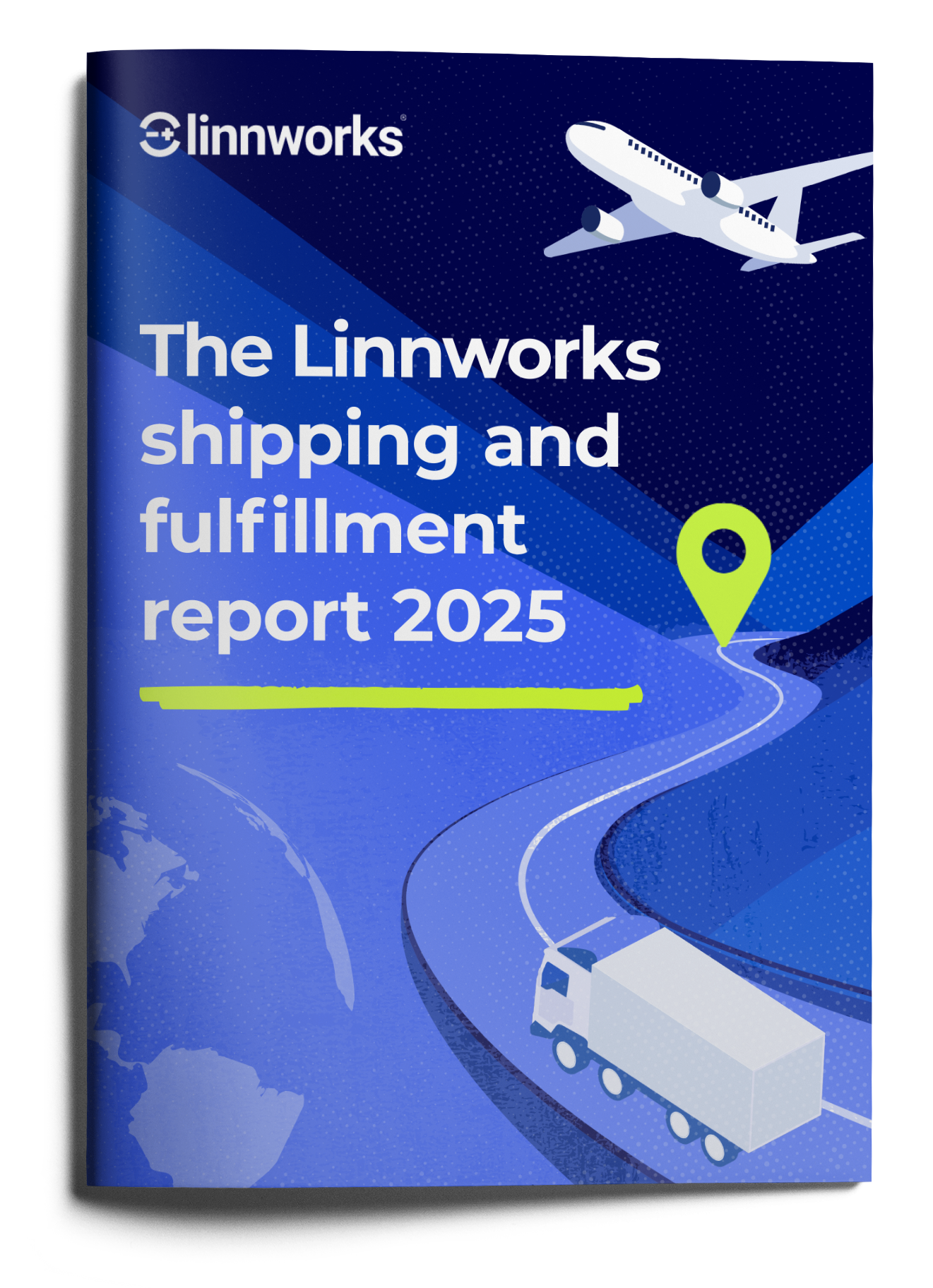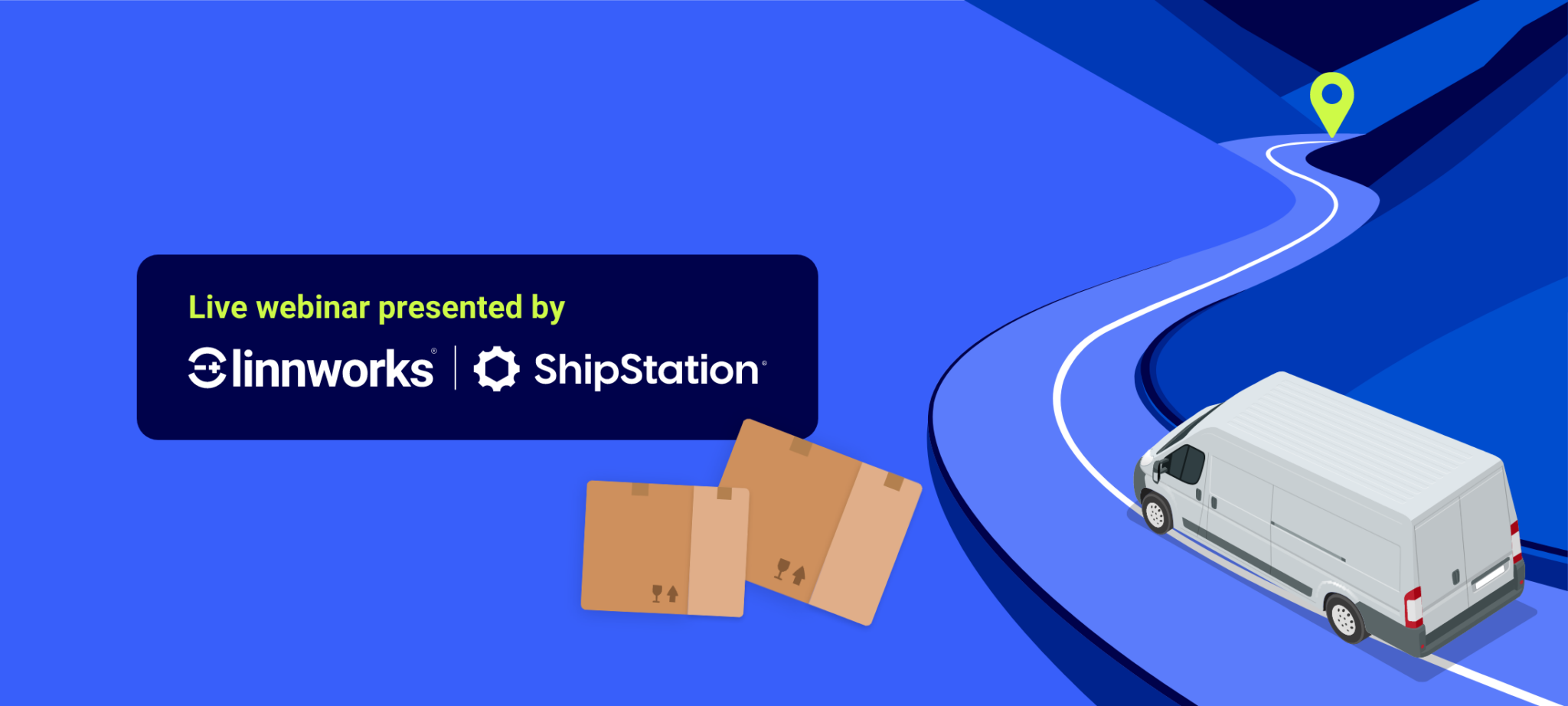

Carrier surcharges keep climbing while shoppers still expect fast-and-free delivery—no wonder 40% of retailers now call ecommerce shipping costs their #1 headache. Every overpriced label comes straight out of your growth budget.
Three levers—smarter rate-shopping, real-time transparency, and streamlined cross-border flows—can claw back margin and help with ecommerce shipping cost management.
Keep reading to see the data behind each friction point and the fast fixes you can deploy today.
The Linnworks shipping and fulfillment report 2025
Explore how shipping and fulfillment can define your brand in 2025 and meet rising consumer expectations effectively.

What Are The Biggest Shipping Costs in 2025?
Based on our latest Shipping and Fulfillment Report 2025, here are some of the major shipping frictions doing the damage:
1. Runaway carrier fees – Four in ten online retailers now say the sheer cost of shipping is their single biggest e-commerce headache. Fuel surcharges, peak-season add-ons and dimensional-weight (DIM-weight) pricing make every label more expensive, cutting into gross profit.
2. The transparency gap – Shoppers expect real-time tracking and precise ETAs, yet 39% of businesses still struggle to manage delivery times. Each missed or fuzzy deadline triggers “Where’s my order?” tickets, refunds and brand-trust erosion—hidden costs that compound fast.
3. Cross-border complexity – International growth looks tempting until duties, customs delays and fragmented carrier networks stack up. It’s why 35% of retailers call cross-border shipping their biggest expansion roadblock, with extra fees and hold-ups eroding any margin uplift from new markets
| Want the full picture? Download the full Linnworks Shipping and Fulfillment Report 2025 and get insights on all the key challenges online retailers face in shipping and fulfillment and how to solve them. |
 Friction points, at a glance:
Friction points, at a glance:
| Pain point | What the data says | How it hurts profits |
| Runaway costs | 40% of retailers say shipping is their #1 ecommerce challenge | Every cent overpaying carriers is a cent you can’t reinvest in marketing or CX improvements. |
| Transparency gap | 39% struggle to manage delivery times, fuelling “Where’s my order?” tickets | Late or vague ETAs drive support volume and refund churn—two silent margin killers. |
| Cross-border complexity | 35% cite international shipping as their top expansion roadblock | Duties, delays and fragmented carrier networks inflate costs and sap the ROI of new markets. |
Those three pressure points—soaring fees, patchy tracking, cross-border hiccups—chip away at profit on every order. The upside? Many retailers are already reversing the trend with a handful of practical fixes.
Mastering Last Mile Delivery: Speed, Savings, and Satisfaction with Linnworks + ShipStation
Watch the webinar to learn about last mile delivery strategies that can save you time and money in your fulfillment operations.

How to Reduce Shipping Costs in 2025 Without Slowing Delivery?
The short version? If you want to reduce shipping cost without slowing delivery, treat shipping as a profit lever, not a sunk cost. Every dollar saved on postage can fund a free-shipping threshold—shoppers often add a final item to qualify, spreading fixed fees across a larger basket.
Fewer partial carts, fuller boxes, and a healthier margin—all before you’ve even touched additional cost-cutting tactics below:
- Rate-shop every parcel with a multi-carrier stack. The most resilient brands now ship with three to five carriers, giving them the flexibility to auto-select the cheapest service that still meets the promised delivery window. Use multi-carrier software tools like Linnworks to do the heavy lifting—comparing live rates and printing the best-fit label in seconds.
- Right-size (and lighten) every box. Pick boxes that actually fit the order. When a package is bigger than it needs to be, carriers charge DIM-weight fees that eat into your profit. The best way to avoid that hit is to keep a short list of standard box sizes, use lighter materials where you can, and let packaging software choose the smallest safe carton for each shipment. Brands that right-size see lower freight bills, fewer breakages, and a greener footprint.
- Renegotiate carrier contracts—quarterly, not annually. Use the delivery stats from your shipping platform to ask for better bulk rates, stricter service-level guarantees, or credits when carriers miss their targets. Frequent check-ins keep prices in line with your order growth and make it easier to hold lagging partners to account.
Dialling in carrier rates, giving shoppers crystal-clear delivery updates, and smoothing out cross-border rules can help you better manage ecommerce shipping costs and leverage those savings to fund your next phase of growth.
Tackle those three areas and every parcel you send starts adding to your margins instead of taking away from them.
| Want every data point and tactic in one place? Download the 40-page Linnworks Shipping & Fulfillment Report 2025 → |
How Do I Run a Quick Shipping Checklist 2025 Audit?
Ask your team these three yes/no questions to spot the biggest profit leaks:
- Rates & Routing: Do we price-check every parcel against at least three carriers before we print a label?
- Delivery Visibility: Can shoppers track their order in real time—from the first scan to the doorstep?
- Cross-Border Readiness: At checkout, do customers see a fully landed cost, including duties and taxes, with no surprises later?
Lock down these three fundamentals and you’ll address the biggest leaks in your shipping and fulfillment ops.
| Can’t answer “yes” to all three? Grab the full six-point checklist—plus step-by-step fixes—in the 40-page Linnworks Shipping & Fulfillment Report 2025 → |
What Shipping and Fulfillment Trends Should Retailers Watch for in 2025?
Customer expectations and shipping tech are both moving fast—and the gap between them can eat margin if you’re not watching. Keep an eye on these three trends set to shape costs and loyalty in 2025.
- Personalized delivery slots:
Speed alone isn’t winning baskets anymore. According to Metapack’s 2025 Ecommerce Delivery Benchmark Report, “convenience of delivery”—including the ability to choose a delivery time slot—remains one of the top priorities for online shoppers, alongside cost, speed, and delivery visibility. Flexible slotting cuts failed first-attempt deliveries and boosts repeat purchase intent because customers feel in control of the last mile. - High-tech packaging optimization:
Automated “right-size” systems are shrinking boxes to fit the order, not the other way round. Packsize reports that right-sized packaging reduces carton volume by 40%, trims corrugate use by 25%, and slashes filler by 60%, all while lowering freight rates and carbon output. - AI-powered fulfilment orchestration:
According to the 2025 Metapack Ecommerce Delivery Benchmark Report, 96% of retailers are now using AI, with those fully integrating AI into logistics and supply chains seeing three times the growth of their peers. AI enables real-time warehouse and carrier decisions—optimizing inventory, dynamically assigning carriers, and improving delivery speed and flexibility.
Download the full Linnworks Shipping & Fulfillment Report 2025
The Linnworks shipping and fulfillment report 2025
Explore how shipping and fulfillment can define your brand in 2025 and meet rising consumer expectations effectively.

What’s inside the 40-page report?
- Benchmarks to measure shipping cost, transparency, and cross-border ROI
- Deep-dives on delivery slots, packaging tech, AI orchestration, and blockchain tracking
- A six-point checklist with play-by-play fixes
- Case snapshots showing real savings and loyalty gains
Get the complete Linnworks Shipping & Fulfillment Report 2025 →
Fuel surcharges, DIM-weight pricing, and peak-season fees kept climbing, even as shoppers expect fast-and-free delivery.
Bring last-quarter volume and on-time data to the table every 90 days, then ask for tiered discounts and credits tied to service-level targets.
A platform that pulls live rates from several carriers, auto-picks the cheapest service that meets your promise, and prints the label in one click.
Duties are import tariffs set by the destination country; taxes (VAT/GST) apply to most goods. A landed-cost calculator collects these fees at checkout so buyers aren’t hit with surprises at the door.
The post E-commerce shipping costs in 2025: why they’re so high—and 6 ways to slash them appeared first on Linnworks.